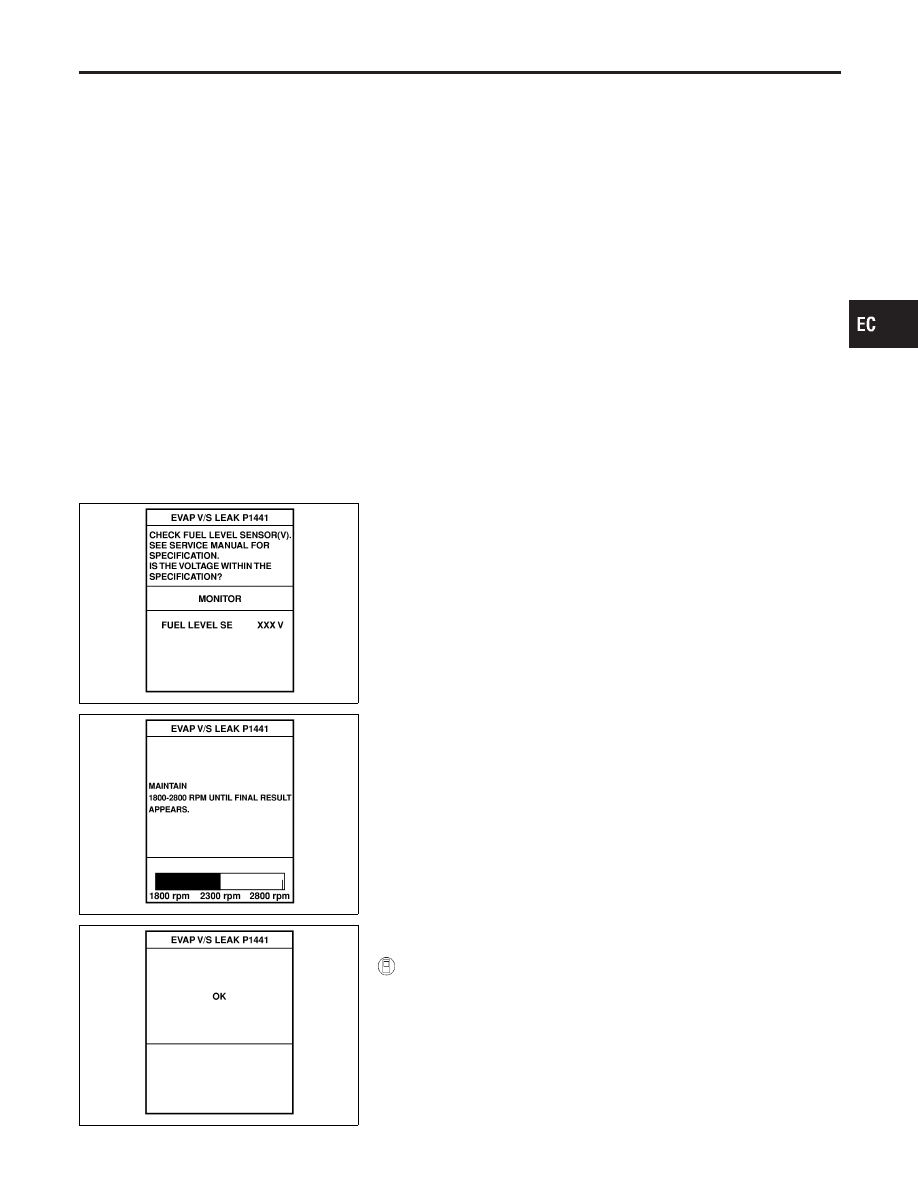Infiniti QX4 (R50). Manual - part 265

I
EVAP purge line rubber tube bent.
I
Blocked or bent rubber tube to EVAP control system pressure
sensor
I
Loose or disconnected rubber tube
I
EVAP canister vent control valve and the circuit
I
EVAP canister purge volume control solenoid valve
I
Absolute pressure sensor
I
Fuel tank temperature sensor
I
O-ring of EVAP canister vent control valve is missing or dam-
aged.
I
Water separator
I
EVAP canister is saturated with water.
I
Fuel level sensor and the circuit
I
EVAP control system pressure sensor
SEF881X
SEF882X
SEF883X
DTC Confirmation Procedure
NBEC0317
CAUTION:
Never remove fuel filler cap during the DTC confirmation pro-
cedure.
NOTE:
I
If DTC P1441 is displayed with P0440, perform TROUBLE
DIAGNOSIS FOR DTC P1441 first.
I
If “DIAGNOSTIC TROUBLE CODE CONFIRMATION PRO-
CEDURE” has been previously conducted, always turn
ignition switch “OFF” and wait at least 5 seconds before
conducting the next test.
I
After repair, make sure that the hoses and clips are
installed properly.
TESTING CONDITION:
I
Open engine hood before conducting following proce-
dure.
I
If any of following condition is met just before the DTC
confirmation procedure, leave the vehicle for more than 1
hour.
a)
Fuel filler cap is removed.
b)
Refilled or drained the fuel.
c)
EVAP component parts is/are removed.
I
Before performing the following procedure, confirm that
battery voltage is more than 11V at idle.
With CONSULT-II
1)
Turn ignition switch “ON” and select “DATA MONITOR” mode
with CONSULT-II.
2)
Make sure the following conditions are met.
FUEL LEVEL SE: 1.08 - 0.2V
COOLAN TEMP/S: 0 - 32°C (32 - 90°F)
FUEL T/TMP SE: 0 - 35°C (32 - 95°F)
INT A/TEMP SE: More than 0°C (32°F)
If NG, turn ignition switch “OFF” and leave the vehicle in a cool
GI
MA
EM
LC
FE
AT
TF
PD
AX
SU
BR
ST
RS
BT
HA
SC
EL
IDX
DTC P1441 EVAP CONTROL SYSTEM (VERY SMALL LEAK)
Possible Cause (Cont’d)
EC-527